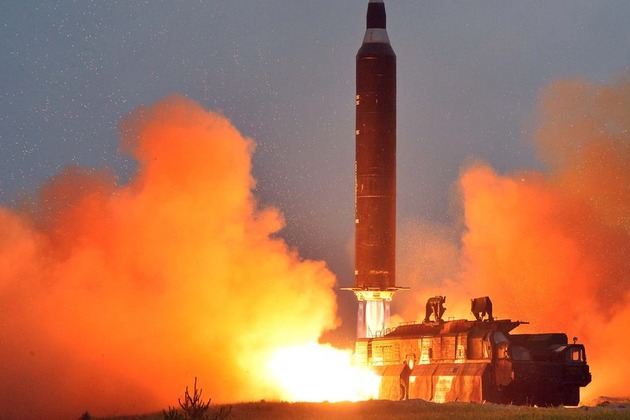- Banned
- #1
North Korea has apparently finished assembling a three-stage rocket at its launch pad in Tongchang-ri, North Pyongyang Province and there are signs that it is preparing for another nuclear test.
A government source here said, "North Korea appears to have completed assembling the second and third stages of the rocket at the launch pad on Saturday after setting up the first stage on Friday." The source added, "A payload believed to be a small satellite has also been mounted. The launch is expected around Saturday after liquid fuel is injected this week."
The government source added analysis of satellite images show an increasingly large pile of soil forming along the southern entrance of the North's nuclear test site in Punggye-ri, North Hamgyong Province, which appears to have come from another site, "so it looks like they buried a nuclear weapon for testing and are covering it up."
Prior to an underground nuclear test, a shaft is dug, the nuclear weapon is placed inside and the shaft filled up. The fact that soil has piled up in front of the shaft that was dug in the second half of last year could mean a nuclear device has been placed there and is now being covered.
A government source here said, "North Korea appears to have completed assembling the second and third stages of the rocket at the launch pad on Saturday after setting up the first stage on Friday." The source added, "A payload believed to be a small satellite has also been mounted. The launch is expected around Saturday after liquid fuel is injected this week."
The government source added analysis of satellite images show an increasingly large pile of soil forming along the southern entrance of the North's nuclear test site in Punggye-ri, North Hamgyong Province, which appears to have come from another site, "so it looks like they buried a nuclear weapon for testing and are covering it up."
Prior to an underground nuclear test, a shaft is dug, the nuclear weapon is placed inside and the shaft filled up. The fact that soil has piled up in front of the shaft that was dug in the second half of last year could mean a nuclear device has been placed there and is now being covered.



